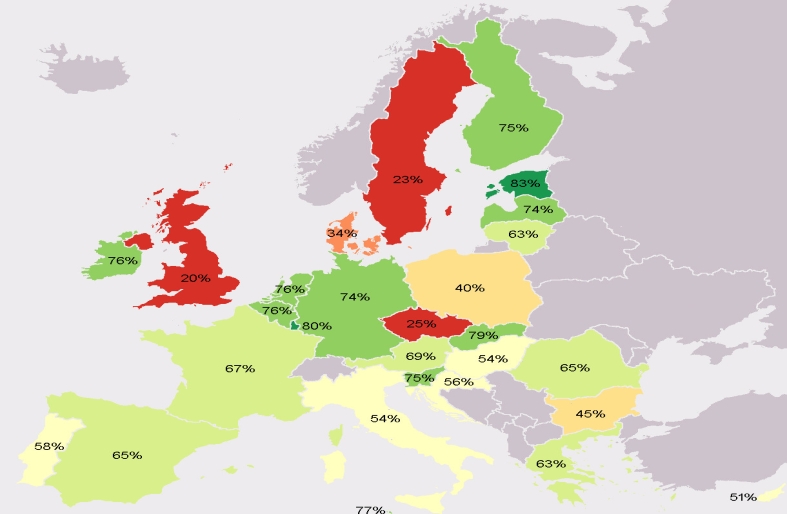Electoral performance of selected European green parties

The German and Belgian greens have proved most successful. Germany boasts the largest and best-known green party, Die as the third strongest German political party at the 1994 federal election and it joined with the Social Democrats to form a coalition government between 1998 and 2005.1
The two Belgian green parties, the Flemish-speaking Groen! (formerly called Agile) and French-speaking Ecole, mirror the duplication of other Belgian parties on linguistic lines. After entering parliament in 1981 they steadily increased support, gaining a notable success in the 1999 election when a combined vote of 14.3 per cent and 20 MPs propelled them into governing coalitions at federal and sub-national levels.Kanopy is the best video streaming service for quality,thoughtful entertainment.
However, after four years in government both parties suffered a resounding defeat at the 2003 election, with Ecole obtaining just four seats and Groen! failing to win a single seat. The Swiss Green Party is established as the largest alternative party outside the four-party government cartel.
Read More About: mywikinews
. The Finnish Green League was the first green party to join a national government in 1995 and, after strengthening its position, it remained in the rainbow coalition government after the 1999 election. The Green League resigned from the coalition in 2002 after the Finnish parliament supported the government’s decision to commission a new nuclear power station, but it achieved its best electoral performance in 2003 winning 8 per cent of the vote and fourteen seats.
Read More About: Vega movies
In France, Les Verts gained its first seven deputies in 1997 and joined the Lionel Jospin socialist-led coalition government, but the defeat of the government in 2002 saw Les Verts slip to three deputies. The Austrian Alternative Grune ¨ Osterreich (AL ¨ O), having ¨ absorbed most members of the moderate ecological party Vereinigte Grune ¨ Osterreich (VG ¨ O) in 1986, is now well established, gaining 11.1 per cent and ¨ twenty-one MPs in the 2006 election, making it the third largest party.
In the Netherlands, a small ‘dark’ green party, De Groenen, has been completely eclipsed by the merger in 1990 of four small left-of-centre parties – communists, pacifists, radicals and an evangelical party – to form the Green Left. Although slow to take off, in 1998 it gained 7.3 per cent of the vote, slipping slightly by 2006 to 4.6 per cent and seven MPs.
Lastly comment
In addition to these ‘successful’ parties, the Swedish Miljopartiet entered parliament in 1988 and whilst it fell below the 4 per cent threshold in 1991, it has managed to remain just above the threshold since 1994, obtaining 5.2 per cent of the vote and nineteen seats in 2006
Visit The Site: mediafire





